Mijn ouders zijn geboren in 1919 en 1920, hebben altijd zelfstandig kunnen wonen en zijn tot op hoge leeftijd gezond gebleven waarbij mijn vader vorig jaar vrij plotseling overleed aan de gevolgen van een longontsteking. Dat het gezond oud worden in de genen zit van mijn ouders heb ik daarbij al ontelbare keren gehoord. Maar is dat wel zo?
Zit het in de genen?
Mijn moeder was de oudste van 10 kinderen waarvan naast mijn moeder alleen haar jongste zus nog in leven is. Haar overige broers en zussen zijn allemaal overleden op vaak (te) jonge leeftijd aan ziekten die we allemaal goed kennen zoals kanker en hart- en vaatziekten. Ook de vijf broers en zussen van mijn vader overleden op een vroegere leeftijd dan hijzelf. Misschien waren er toch andere redenen voor de buitengewone gezondheid van mijn ouders dan alleen hun genen.
Wat speciaal is aan mijn ouders is dat ze altijd juist zo gewoon en onopvallend zijn geweest. Mijn vader was een enthousiaste boer en zijn dagelijkse werk was wat hem het meest plezierde. Van het voorjaar tot aan de herfst zorgde hij voor de gewassen en in de winter was hij bezig met het onderhouden en repareren van zijn landbouwmachines. Mijn moeder deelde zijn enthousiasme voor de boerderij en haar bloemen- en groentetuin. Nooit heb ik mijn ouders laat naar bed zien gaan, overmatig zien eten of drinken en nooit hadden zij last van overgewicht.
Gezonde levensstijl
In tegendeel, mijn ouders waren altijd in goede lichamelijke conditie door hun dagelijkse werkzaamheden op de boerderij. Hun maaltijden bestonden doorgaans uit heel gewone zaken zoals volkorenbrood, volle melkproducten, aardappelen, kip en varkensvlees door de week, vis op vrijdagen, biefstuk op zondag en altijd veel, heel veel verse groenten uit de eigen groetentuin. Af en toe bezochten ze wel eens een restaurant, maar de veelgehoorde opmerking was dat het eten thuis toch lekkerder was.
Vooral mijn moeder had een heel pragmatische manier om met ongewenste stress en teleurstellingen om te gaan. Altijd had zij wel een Plan B beschikbaar onder het motto dat als het niet kon zoals het moest, het dan maar moest zoals het kon.
Onderzoek toont aan dat de kenmerken van die leefstijl inderdaad de sleutel vormen om gezond te blijven en erg oud te kunnen worden
Rijk sociaal leven
Ondanks dat het leven van mijn ouders op deze manier saai lijkt, hadden ze geen eentonig leven. Mijn ouders hadden een rijk sociaal leven met nauwe familiebanden en vele vrienden vooral in de lokale landbouwgemeenschap. Na hun pensioen reisden mijn ouders de hele wereld over, waarbij ze de kans kregen de vele wereldwonderen met eigen ogen te aanschouwen. Ook ontwikkelden ze een passie voor fietsen, wandelen en zwemmen, waarvan ze nagenoeg elke dag wel één activiteit ondernamen.
Het is mij als medicus vooral het laatste decennium duidelijk geworden dat het verhaal van mijn ouders niet toevallig is. In de tussentijd zijn er namelijk gebieden op aarde ontdekt die de Blauwe Zones worden genoemd waar de mensen bijzonder oud worden en op dezelfde manier blijken te leven als mijn ouders. Daarnaast worden er in hoog tempo onderzoeken gepubliceerd die aantonen dat de kenmerken van die leefstijl inderdaad de sleutel vormen om gezond te blijven en erg oud te kunnen worden.
De belangrijkste elementen zijn dingen die voor ons allemaal herkenbaar zijn en in principe ook in te passen in ons dagelijkse leven zoals aandacht voor familie en vrienden, het eten van verse onbewerkte voeding, vermijden van chronische stress, matig alcohol en niet roken, een dagelijkse wandeling van minstens een half uur en niet te vergeten, het altijd hebben van een doel in je leven.
Doel in je leven
Na de dood van mijn vader is het leven van mijn moeder behoorlijk veranderd. Ze mist zijn levendigheid en dat ze er samen met de auto nog geregeld op uit gingen om ergens een kopje koffie te drinken, bij familie of vrienden langs te gaan of om zomaar even de gewassen te bekijken op de boerderijen in de omgeving. Ondanks dat mijn moeder in de watten wordt gelegd door iedereen die haar kent en door de dagelijkse thuishulp gewoon in haar huis kan blijven wonen is de rijkdom uit haar leven verdwenen.
Nu mijn vader haar liefde, aandacht en zorg niet meer nodig heeft is er geen echt doel meer in haar leven. Maar behalve dat ze lichamelijk nog gezond is blijft ze ook geestelijk sterk. Ze praat ook regelmatig over de dood. Mijn moeder kan terugzien op een voltooid leven en ze is er zich elke dag van bewust dat het goed is geweest. Zoals haar man is heengegaan wil zij eigenlijk ook. Zonder pijn en zonder lijden, het liefst dat ze op een avond naar bed gaat en niet meer wakker wordt.
Mijn moeder ziet vooruit naar het feest van haar honderdste verjaardag. Ze zal mijn vader op die dag zeer missen, maar mijn moeder is gelovig en weet dat het vast geen jaren meer zal duren voordat ze opnieuw met mijn vader herenigd zal zijn.
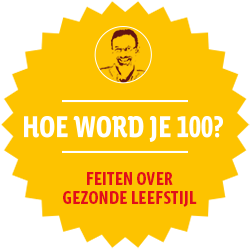
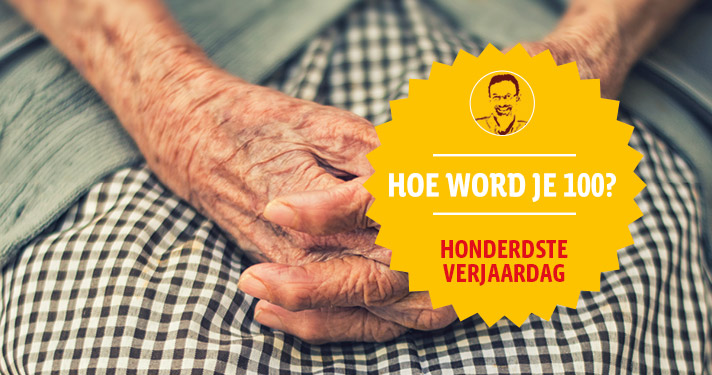

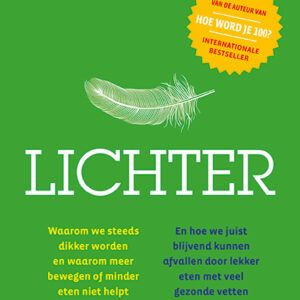
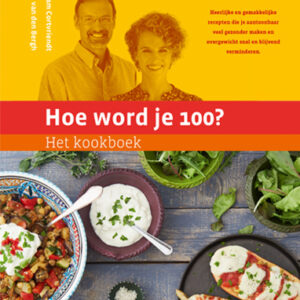

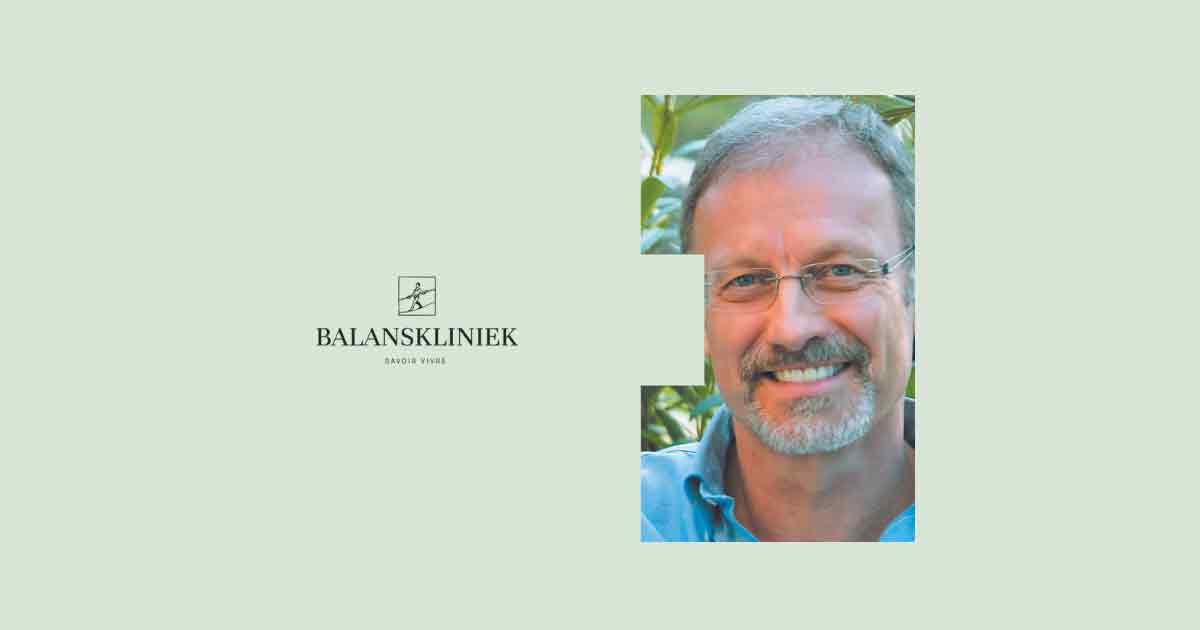
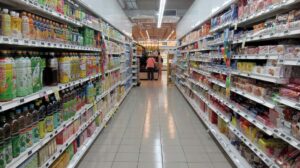
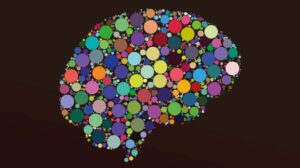
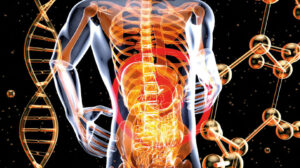
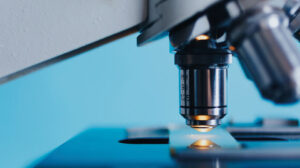
Mijn moeder, een opgewekte positieve vrouw werd helaas maar 75. Haar oudere zus , een zure en negatieve vrouw werd 98. Beide waren zelden ziek en hadden allebei een man met gezondheidsproblemen. Mijn vader had chronische bronchitus en de man van mijn tante had reuma. Mijn ouders hadden een vrij gelukkig huwelijk en mijn oom en tante leefden op ruzieachtige manier samen en de laatste jaren van hun huwelijk zelfs apart hoewel ze nooit gescheiden zijn. Als ik over nadenk is het natuurlijk triest dat mijn moeder niet net zo oud als haar zuster geworden is , maar denk wel dat zij zou zeggen liever niet zo oud maar wel gelukkig dan vreselijk oud en ongetwijfeld ook vreselijk ongelukkig. Kan mij niet herinneren dat ik mijn tante ooit onbedaarlijk heb zien lachen. Zelfs een glimlachje was een zeldzaam iets.
Een mooi verhaal over uw ouders. Ik vind het wel anekdotisch bewijs.
In de familie van mijn vader worden de vrouwen (zijn moeder, overgrootmoeder, zijn tantes) over het algemeen behoorlijk oud, 89, 93, 92, 97, 95…weliswaar geen 100 maar er niet al te ver vandaan.
Deze vrouwen waren allemaal veel te zwaar, mijn oudtante die overleed op haar 97e woog zeker 120 kilo en de anderen waren ook 100-plussers. Ik zie niet echt overeenkomsten in karakter, mijn oma en één van mijn oudtantes waren echte schatten van mensen die zich niet al te druk maakten om kleinigheden, maar de jongste was een echte drama-queen!
Ik denk dat genen er wel degelijk iets mee te maken hadden. Zijn familie is afkomstig it Frankrijk, en ze hebben twee wereldoorlogen overleefd, waarin honger is geleden en aan alle kanten mensen stierven, dus ze moeten toch behoorlijk wat weerstand en overlevingsdrang hebben gehad.
Wat mij is opgevallen is dat de dames altijd lang bezig waren in de keuken en dat de hele familie eindeloos aan tafel zat (heel saai vond ik dat altijd als kind). De dagelijkse boodschappen deden ze op de markt, nooit in de supermarkt, en mijn grootmoeder zei eens meewarig dat het tijd werd dat ik leerde koken, want ‘pakjes en zakjes open maken, dat is geen koken, ma chère’. Vers, lokaal, van het seizoen en geen kiloknallers vlees of voorgesneden groenten, en wijn! Altijd bij iedere maaltijd een glas wijn. Ik ben mijn hele leven al op dieet en ik word nooit slank, ook niet met het Hoe word ik 100 dieet. Ondanks dat hoop ik de leeftijd van de zeer sterken te bereiken, want de genen heb ik in ieder geval wel!
Prachtig! En inspirerend…..
Gefeliciteerd met uw moeder!
Why body dies?
Konstantin Pavlovich Buteyko said that there is no any reason for human body to die from physiology point of view. The body is perfect and able to completely renew itself if it has all elements needed to do this restoration work. But it does not live even 150 years while it has to live at least 300 years. Why?
The answer is quite obvious. There are two main factors making our bodies sick and miserable.
1. There are two facts we have to consider here:
1.1 Life on Earth is Carbon (С) based. There are 3 main elements are used to build all living bodies. They are: C, H and O. The most bio-chemical structures in human body looks like Progestoron – C21H30O2 – a lot of carbon C, oxygen O2 and hydrogen H. Other elements like Ca, Na, Fe etc. also used but much less then these three. Carbon we get from food – organic structures which contain again a lot of C element. Another source of carbon is carbon dioxide CO2 which is sub product of cells breathing process: every cell consumes a lot of oxygen and throws outside CO2. Oxygen comes to cell from air breathing in via blood transportation system. Water is the great source of H – hydrogen. Oxygen is the most important: when we stop breathing brain cells die in 5 minutes. When we stop drinking water we die in 1-2 weeks because of lack of hydrogen. C – carbon is very important as well but it is less obvious. When we stop eating we can live for more then 3 month. But it is because our body produce a lot of CO2 inside via cells breathing process which supplies needed carbon to bio-chemical processes in the body.
1.2 Body consists of cells which need all three above elements. The cells do the whole work. If cells do not get what they need to function properly they just die. If body cells have everything they need they easily reproduce by just dividing. If all cells work properly the whole body is healthy and strong, it works like Swiss watch and can never die. In modern time our body cells suffer from great shortage of oxygen. This is the discovery of Konstantin Buteyko – scientific explanation why human body quickly gets sick, old and die. He called it the Deep Breathing Disease because we remove exhaling a lot of carbon dioxide through deep breathing. In medical science there is well known Bohr’s Law: if the level of carbon dioxide CO2 in tissue is low the oxygen – O2 remains in blood. It simply means that there is a lot of oxygen in the blood of modern men and no oxygen in inter-cellular fluid which is the living environment of all cells in the body. That is the main reason why we develop all kind of body disorders in all body systems – we do not give our body what it needs to function properly. What we expect? That’s why Buteyko Method of developing new breathing pattern and increasing of carbon dioxide level in the body heals more then 150 different disorders. It is not a miracle, it is just logic scientific approach based on correct understanding of human body.
2. The second reason is the constant body poisoning because of bad air, food full of pesticides and other poisons, wrong eating habits like years long mixing of incompatible products. The last factor is also based on the lack of body knowledge. For instance, to eat desert right after diner is the best way to poison body heavily because sugar is digested only in the lowest part of digestive system, in long intestine. When it stays in the stomach for some time it turns to spirit, get sucked in the blood and spread all around the body. When you do it for many years and kill many cells in your body it feels and looks like garbage can. It is the same reason – ignorance and lack of ability to feel which is the result of ill body and agitated mind.
But just to change eating habits and try to avoid poisonous environment is not enough. It is much more important reason why our body gets sick and quickly destroyed is the lack of carbon dioxide in inter-cell fluid. CO2 is the main component which is used to neutralize and remove poisons from body tissue. It cleans the body. When it is not enough of carbon dioxide the poisons are accumulated there and brake the most of metabolic processes. Even if we are get poisoned regularly but would have normalized breathing and normal level of CO2 the body would be able to stay healthy just by cleansing and removing most of poisons. But unfortunately most of us have low carbon dioxide level and poison the body by all means.
The only solution is to increase CO2 in the body by normalizing breathing. There many additional tools and means how to stop loosing carbon dioxide like breathing exercises, diet, correct physical exercises etc.
The list of disorders caused by low level of carbon dioxide is huge because every body system is effected. Our body metabolism includes about 200 vitamins and 1000 enzymes. Even with normal nutrition if there is a shortage of CO2 the assimilation of vitamins and enzymes dramatically decrease. Сalcium is washed away in particular. The bones get fragile and the joints get slowly destroyed. And that is just a fragment of the whole picture of body dis-functions caused by carbon dioxide shortage.
That is why Buteyko Method heals so many so different disorders like asthma, allergy, diabetes, Parkinson’s disease on early stage, irregular menstruation etc. Check some of them in the list of disorders that can be healed by Buteyko Method.
It is because of the core metabolism of the body is disturbed. Hyper ventilation – deep breathing pattern, low carbon dioxide level resulting massive shortage of oxygen all around the body is the real cause of the most body disorders.
I. List of Hyperventilation Diseases, Reversible by the Buteyko Method
By K.P. Buteyko MD
All kind of Allergies
respiratory allergies
polyvalent allergy, including pollen disease
laryngospasm (voice loss)
allergic conjunctivitis
food allergies
drug allergies
false [spasmodic] croup
pharyngitis
laryngitis
tracheitis
Asthmatic bronchitis
Asthma
Chronic Obstructive Pulmonary Disease (COPD)
Rhinitis (Chronic cold)
Vasomotor rhinitis
Frontal sinusitis
Maxillary sinusitis
Sinusitis
Enlarged Adenoids
Polyps (polyposis)
Chronic rhinosinusitis
Pollinoses (hay fever)
Angioedema
Hives (urticaria)
Eczema, including:
neurodermatitis
psoriasis
infant rash
vitiligo
ichtyosis
acne
Raynaud’s disease (vascular spasms of the upper limbs)
Arterial Occlusive Disease
Varicose veins
Thrombophlebitis
Hemorrhoids
Hypotension
Hypertension
Vegetative-vascular dystonia (VVD) or Neurocirculatory Dystonic Disease
Congenital heart disease
Rheumatoid arthritis (RA)
Rheumatic heart disease
diencephalic syndrome
Coronary heart disease (CHD), Ischemic heart disease (IHD)
Chronic Ischemic heart disease
rest and exertional angina (pectoris)
postinfarction cardiosclerosis
Heart Rhythm Disorders
tachycardia
arrhythmia
paroxysmal tachycardia (PSVT)
atrial fibrillation
Atherosclerosis
Arachnoiditis (post-traumatic, influenzal, etc.)
Post-stroke conditions:
Paralysis
paresis
Parkinson’s disease (early stage)
hypothyroidism
Hyperthyroidism
Graves’ disease
Diabetes
Menstruation Disorders
Morning sickness
Menopausal Disorders
Cervical erosion
Fibromyoma
Fibrocystic Breast Disease (FBD)
Infertility
Impotence
Threatened miscarriage
Radicular pain
Osteochondrosis
Metabolic polyarthropathy
Rheumatoid polyarthropathy
Dupuytren’s contracture (contracture of the palmar fascia)
Gout
Pyelonephritis
Glomerulonephritis
Nocturnal urinary incontinence (bed-wetting)
Cystitis (urinary bladder inflammation)
Kidney stone disease
Obesity (all degrees)
Lipomatosis
Chronic gastritis
Chronic cholecystitis
Biliary dyskinesia
Chronic pancreatitis
Gallstone disease
Duodenal ulcer
Irritable bowel syndrome
Peptic ulcers (PUD)
Multiple sclerosis
Epileptic syndrome, (epilepsy)-convulsive syndrome
Schizophrenia (early stage)
Сonnective tissue disease s(cleroderma, systemic lupus erythematosis, dermatomyositis
Glaucoma
Cataracts
Strabismus
Farsightedness
Radiation sickness
Radiation sickness
Acute and chronic hepatitis
II. List of Symptoms of Deep Breathing (Hyperventilation) Disease, Reversible by the Buteyko® Method
By K.P. Buteyko, M.D.
Nervous System:
Headaches and migraines
Dizziness
Fainting (sometimes with the epileptic spasms)
Sleep disorders, including insomnia and drowsiness.
Tinnitus
Memory Loss
Fatigue
Irritability
Short temper
Attention deficit
Unsubstantiated fear
Apathy
Hearing Loss
Paresthesia (including total loss of sensitivity, more frequently in limbs)
Spasms during sleeping, tremor and tick
Vision loss
Age related farsightedness
Various flashings in eyes, grid before eyes, etc.
Increase in the intraocular pressure
Pain caused by eye motion upward and to sides, glaucoma, cataract, strabismus
Radiculitis, osteochondroses, etc.
Parkinson Disease (initial forms)
Multiple sclerosis
Epilepsy
Schizophrenia (initial stage)
Vegetative Nervous System:
Crises of the type of diencephalic and vegetative, including: sweating, body temperature irregularity, casting into cold or into the heat, groundless chills
Unstable body temperature of the thermo-neurosis type, etc.
Endocrinal System:
Hyperthyroidism, opthalmopathy of Grave’s disease, Grave’s disease, diabetes mellitus, obesity or exhaustion, sometimes of endocrine type
Menopausal disorders, the disturbance of menstrual cycle, morning sickness
Fibromyomas
Mastopathy ( Fibrocystic breast changes)
Impotence
Frigidity, infertility, miscarriage
Erosion and polyps in the neck of uterus, etc.
Respiratory System:
Spasm of larynx and bronchial tubes (asthma)
Preasthmatic conditions including: respiratory allergy, polyvalent allergy, laryngospasm (loss of voice)
Allergic conjunctivitis, food allergy, medicinal allergy, pseudo-croup, pharyngitis, laryngitis, tracheitis.
Hypersensitivity to kitchen smells, paint, perfumes, tobacco, flowers, etc.
Asthmatic bronchitis, obstructive bronchitis, exercise induced shortness of breath and during inactivity, mouth breathing, frequent deep breathing with participation of additional respiratory musculature
Absence of pause after exhalation at rest
Breathing arrhythmia or the periodic sensation of air deficiency
Sensation of air insufficiency during inhalation
Sensation of chest constraint
Discomfort related to stuffy air
Obstructive nasal breathing during rest or light physical activities
Nasal congestion, rhinitis (vasomotor type)
Predisposition to seasonal colds, including frequent bronchitis, influenzas, etc.
Cough (dry or with mucus), dryness in the mouth and sinuses, chronic maxillary sinusitus
Frontal sinusitis, sinusitis, enlarged adenoids, polyps in the trachea, the bronchi, emphysema of lungs, pneumosclerosis, interstitial pneumonia, chronic pneumonia, bronchiectasis and spontaneous pneumothorax, loss of sense of smell, chest pains
Incorrect posture, deformation of chest
Inflation of subclavian regions (emphysema of upper part of lungs, etc.)
Cardiovascular System:
Tachycardia, extrasystole, paroxysmal tachycardia
Cardiac fibrillation, spasm of blood vessel in the extremities, brain, heart, kidneys; chills, sensitivity to cold of extremities and other regions, pain in region of heart, coronary artery disease, stenocardia (angina pectoris), hypertonia, hypotonia, Raynaud’s disease ( constriction of blood vessel in upper extremities)
Obliterating endarteritis, telangiectasia, varicose veins, including hemorrhoids
Marbling of skin, fragile blood vessels, gingivitis, frequent nose bleeds, etc.; sensation of the palpitations in different regions
Pulsatory ear noise
Vascular crises, arachnoiditis (post-traumatic, influenza); myocardial infarction, postmyocardial infarction cardiosclerosis, stroke, parotiditis, paresis, an increase in the coagulability of the blood, thromboses (thrombophlebitis), decrease of the alkaline reserves of
blood, electrolyte balance, hypercholesterolemia, eosinophilia, hyper- and hypoglobulemia, change of PH in blood, decrease of partial oxygen pressure in arterial blood in initial stage of disease and opposite changes on final stages of disease, etc.
Digestion System:
Appetite disorders, salivation or dryness in the mouth
Distortion or loss of taste, spasm of throat, stomach (pain in the epigastric region, etc)
Colitis (constipation, diarrhea), pain in right subcostal area, dyskinesia of bile tracts, heartburn, frequent eructation, nausea, vomiting, flatulence, some forms of gastritis and ulcer, disease of stomach and of duodenum, etc.
Chronic cholecystitis, chronic pancreatitis
Kidneys and Urinary System:
Protein in the urine, oxalates, urates in urine, urolithic disease: pyelonephritis, glomerulonephritis
Frequent urination, especially at night
Micturia (involuntary urination at night), cystitis, diuretic symptoms, etc.
Musculoskeletal system:
Muscular weakness, rapid physical fatigue
Aches in muscles, more frequent in legs (calf muscles), twitching of groups of muscles, strengthening or weakening of muscles tone, atrophy of muscles, pain in tubular bones etc.
Connective tissue disease (scleroderma), postoperative scars, etc
Contracture of wrist tendons
Skin and mucosas:
Dryness of the skin (ichthyosis), pustulous rashes, skin itch, hives, eczema (neurodermatitis, diathesis), psoriasis, tendency toward fungus diseases, pale gray skin, acrocyanosis, angioedema, vitiligo— (focal depigmentation of the skin), adolescent acne, pastiness of face, eczematous blepharitis, cyanosis, etc.
Metabolic disorders:
Lipoma (fatty tumours), injection infiltrations tumors
Osteophytes and deposit of salts in region of joints according to the type of gout, metabolic and rheumatoid polyarthritis, deposits of cholesterol on the skin (more frequent on eyelids), tissue hypoxia, concealed edemas, the abnormalities of tissue metabolism (according to the type of allergic reactions), etc.
Biochemical analysis of Buteyko’s Method by Karzimov,
For those with a highly technical interest, this biochemical analysis of Buteyko’s Method by Karzimov is both an extraordinary piece of technical work as well as being a highly detailed explanation of mechanisms around how and why the method works.
https://docs.wixstatic.com/ugd/37b13a_92e6561893754a4f98c6ce30f3d272f8.pdf
Lieve verhalen
Ik herken het eerste verhaal
Ons moeder wordt 10 februari ook 100
De oudste van 7 helaas broers en zussen zijn niet meer
Ons moeder had een mooi huwelijk was altijd tevreden met wat ze had
10 kinderen opgevoed
Waarvan 3 overleden dat maakt haar nu ze zo oud is verdrietig 1,5 jaar geleden oudste dochter die altijd bij haar was
Ze stond positief in het leven
Haar geheim
Roomboter verse groenten aardappels en stukje vlees
Is erg op haar tijd gesteld
3 maaltijden en weinig drank nooit gerookt en op tijd naar bed 😊